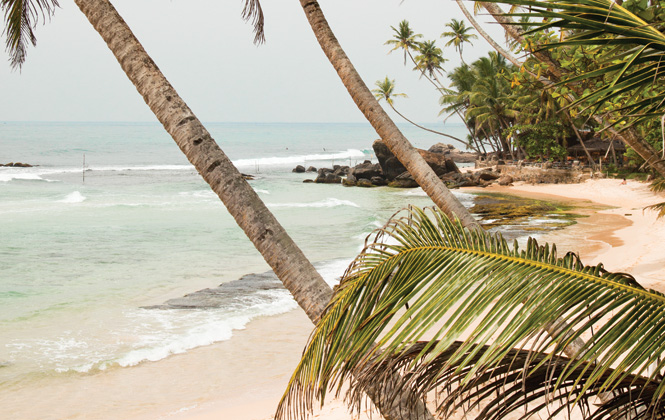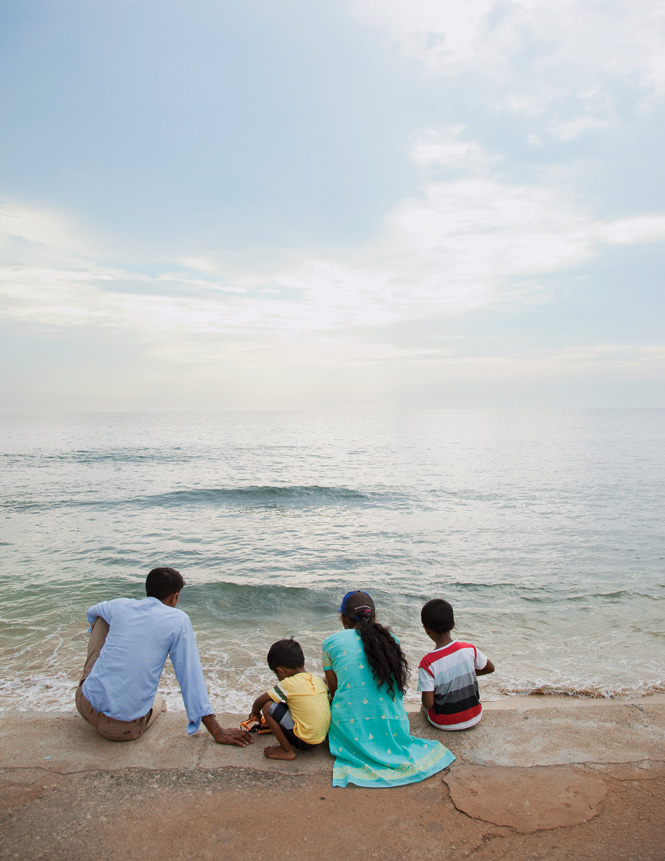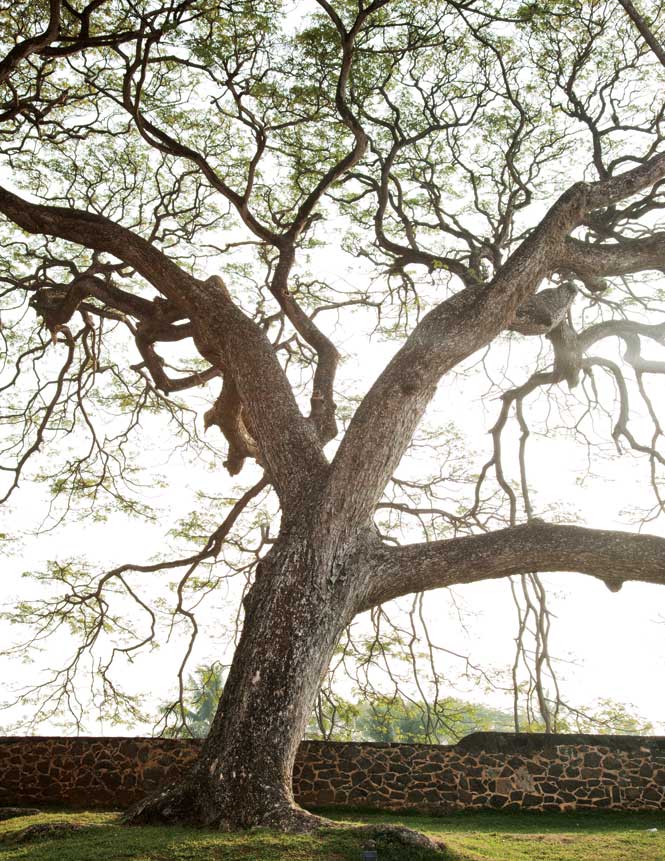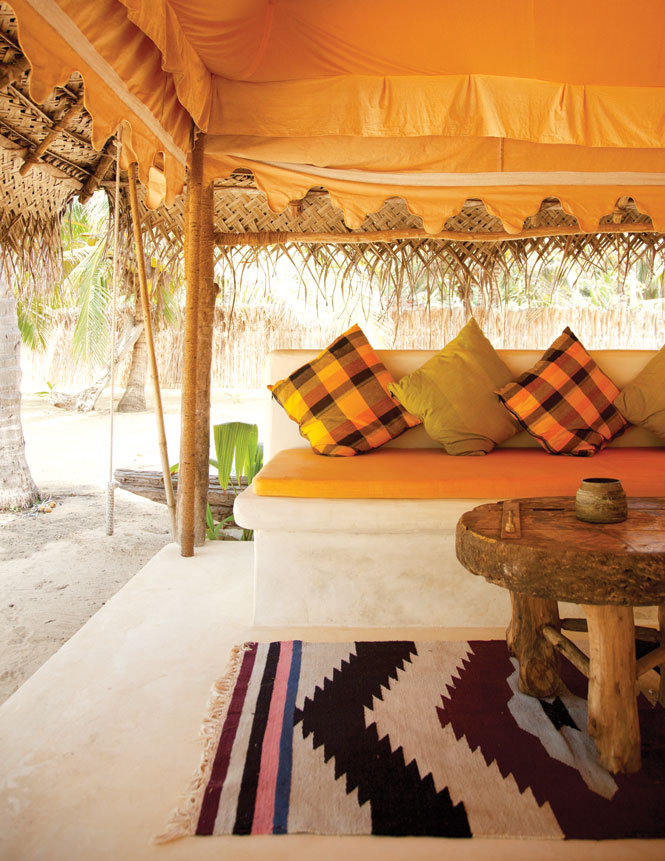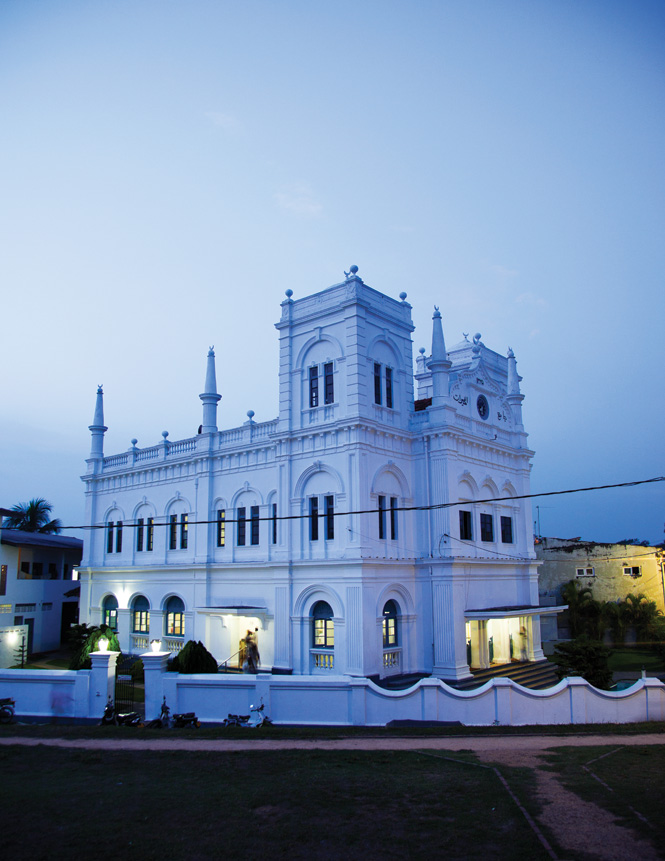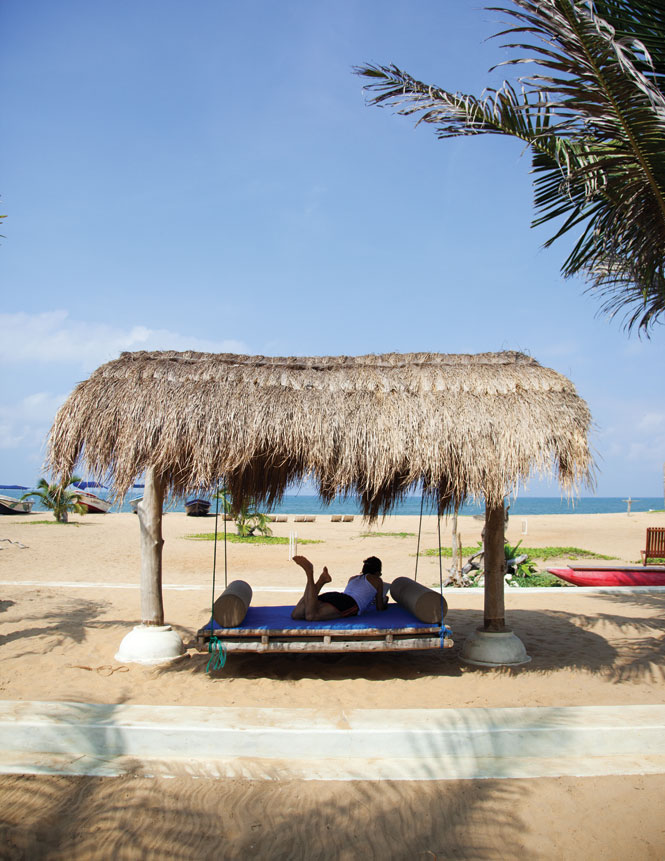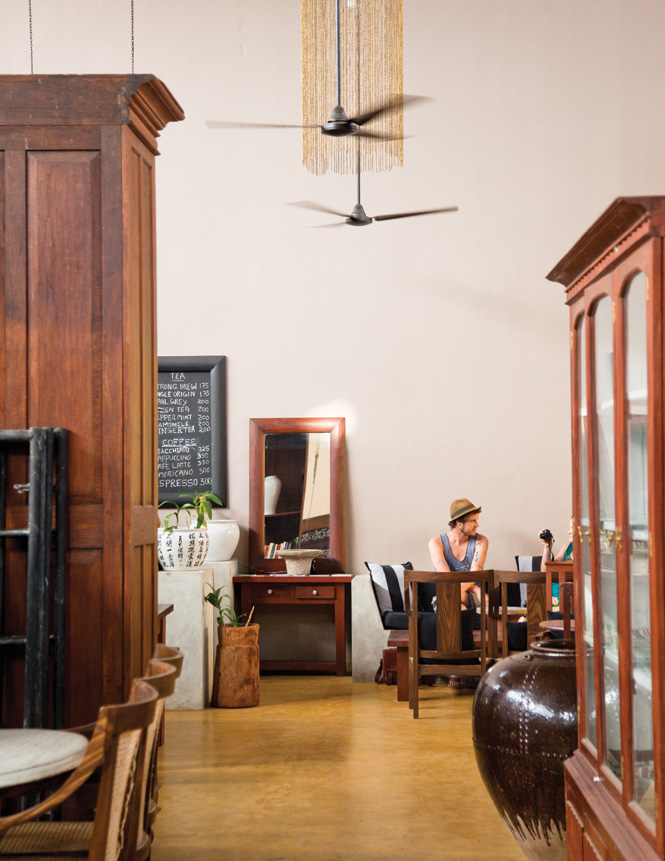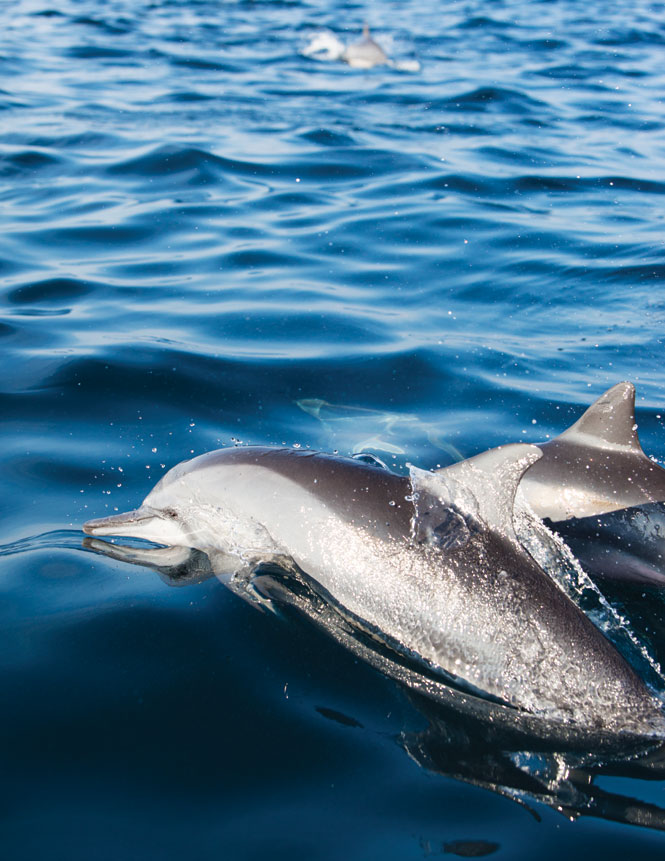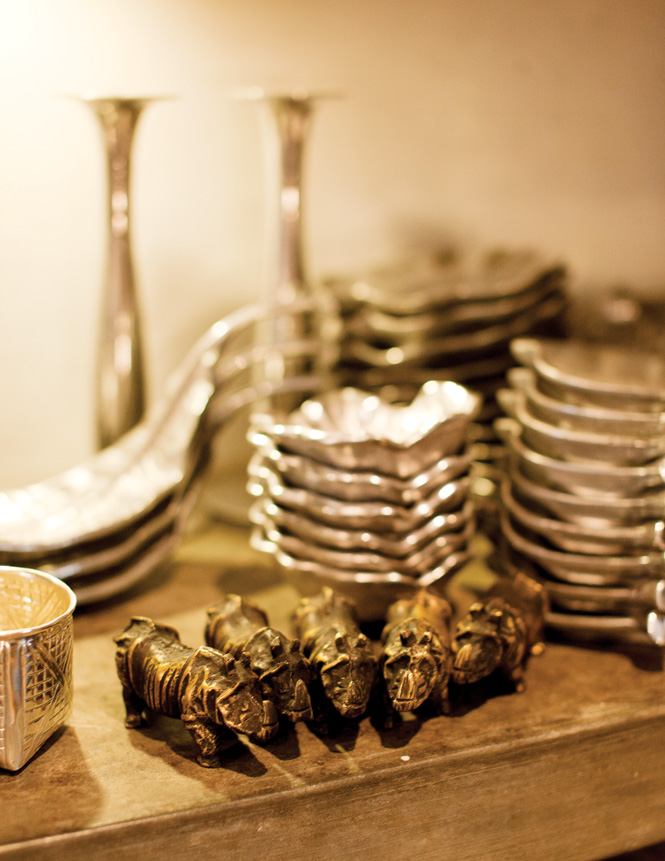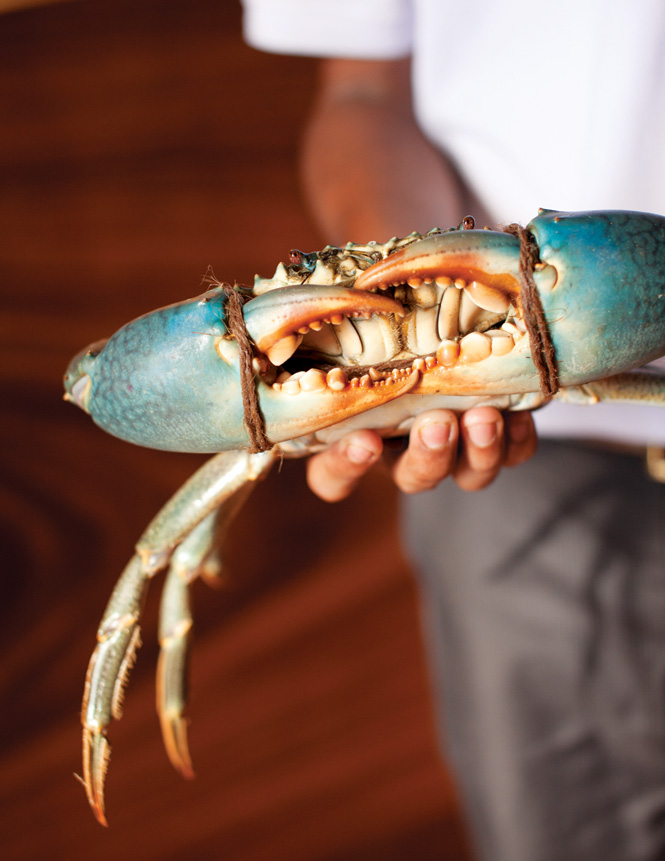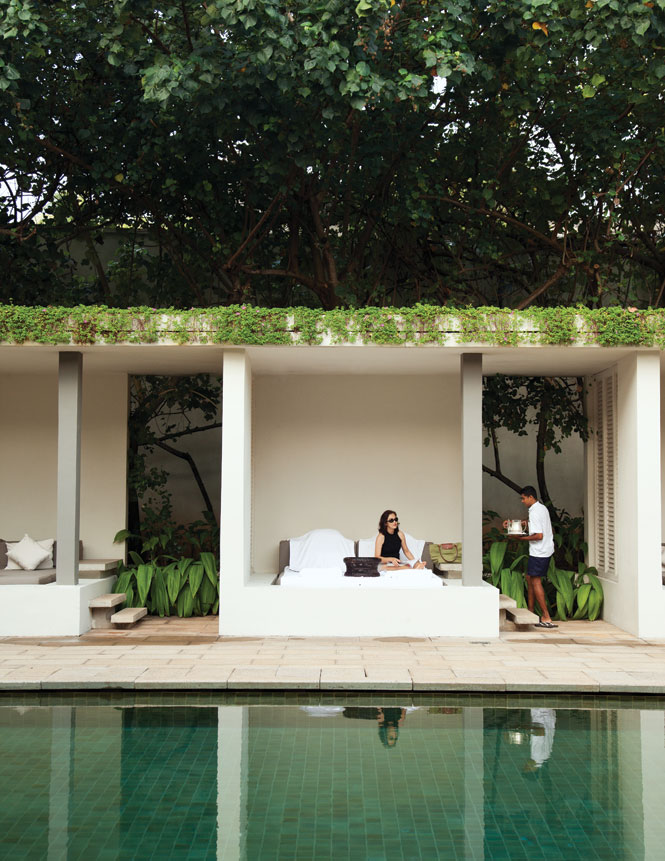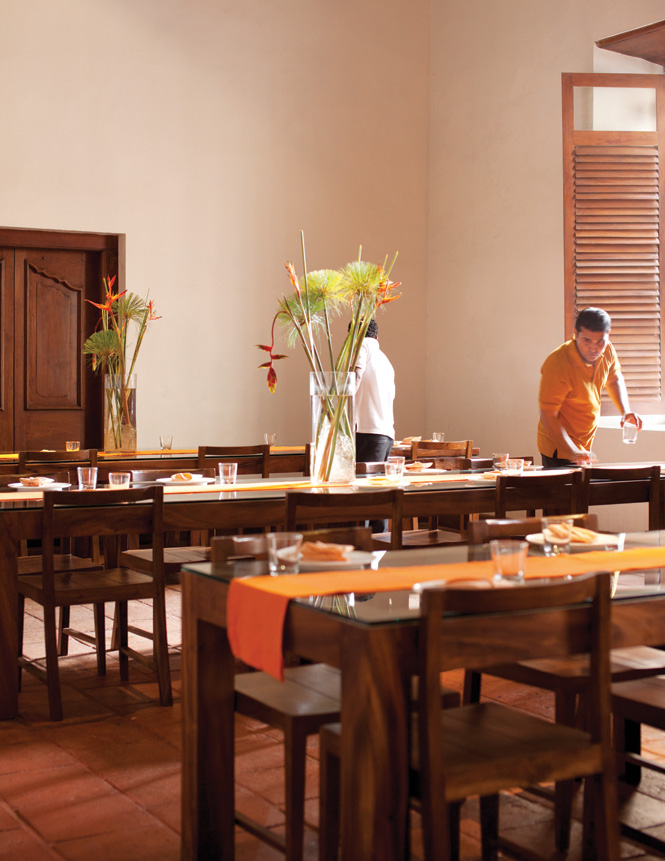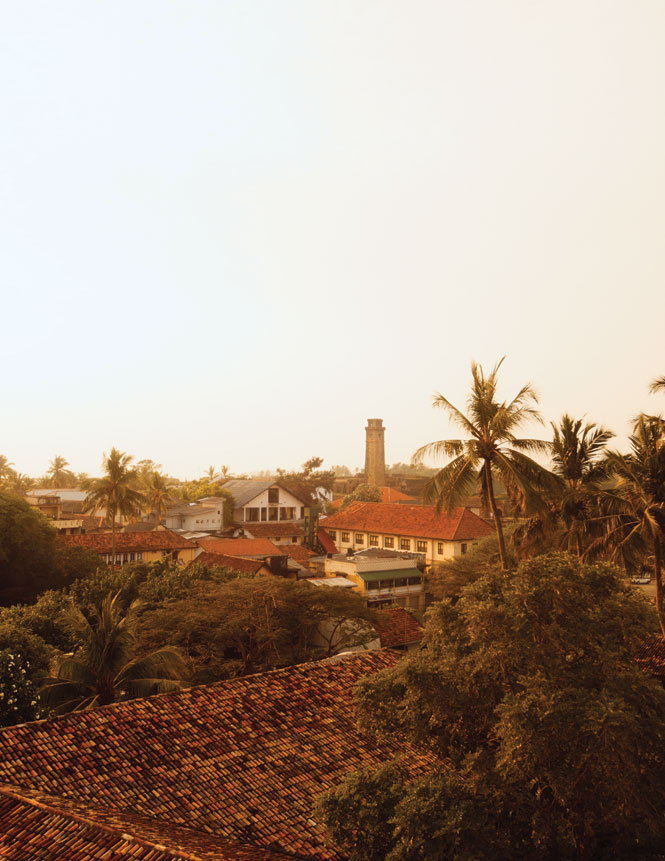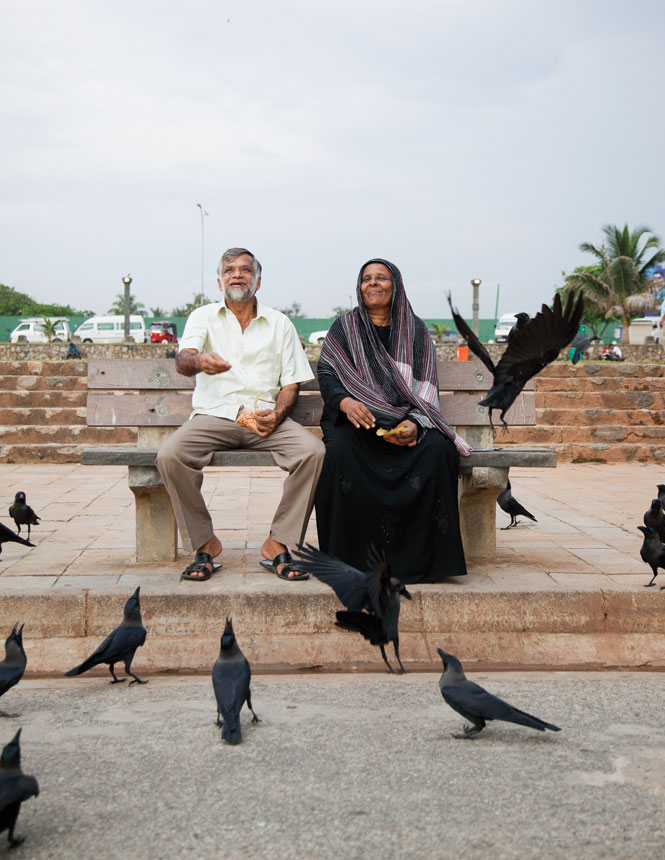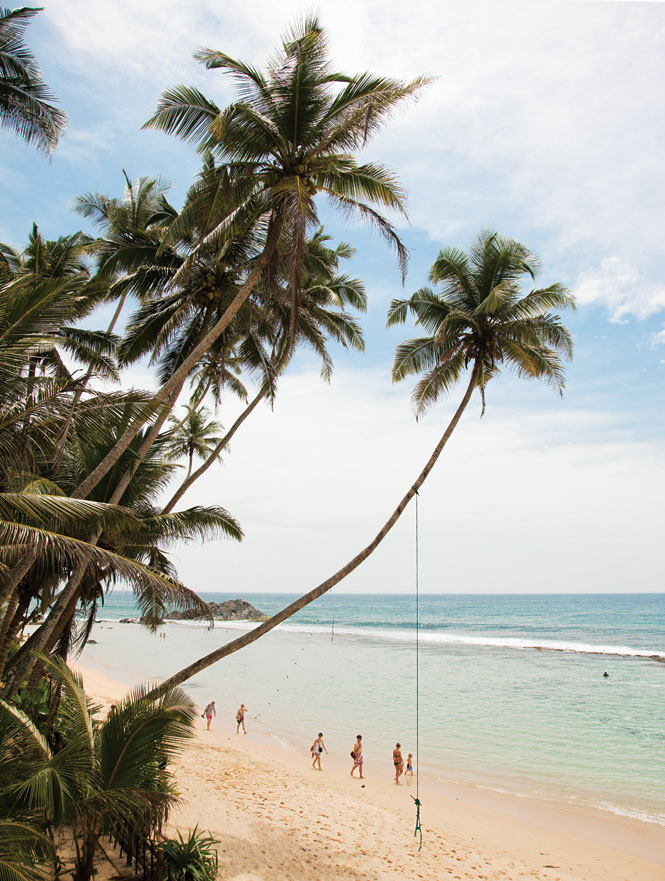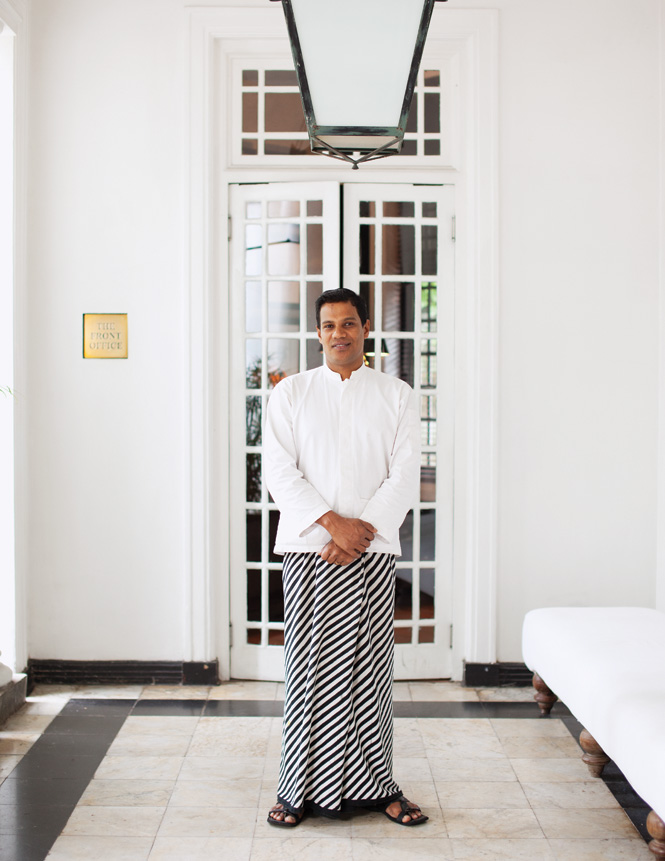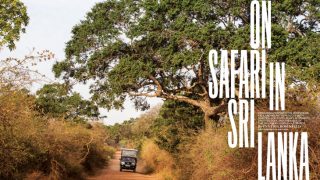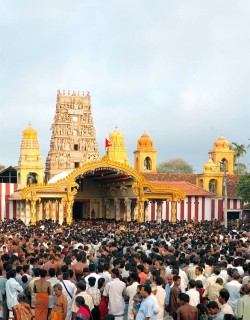The war’s legacy, however, is never too far away. In Colombo, it’s hard to escape the triumphalism and the anger directed at Western critics. Pro-government newspapers are filled with ominous warnings about “saboteurs”—meaning activists, aid workers, journalists, and anyone who questions the government—threatening the country’s stability. “Unpatriotic elements who depend on NGO dollars trying to create problems,” screams the Daily News.
Above, from left: A view over Galle Fort from the Amangalla; something to crow about on Galle Face Green; Unawatuna Beach, near Galle; service with a smile at Colombo’s Paradise Road Tintagel hotel.
In Galle, the war’s aftermath appears in more subtle ways. At Olanda, a cavernous antiques store located in an old cinnamon warehouse, I pause to admire an elaborately carved, human-sized peacock. The manager tells me that it was used in Hindu ceremonies—a child picked as a living god for a day would sit astride it. “From Jaffna—very good piece,” he advises me. I wonder if it was voluntarily sold or plundered from the Tamil north. The fact that the manager is Muslim—another minority that’s been the target of pogroms—further complicates the picture.
But it’s in Kalpitiya, an idyllic beach getaway three hours north of Colombo, that the fullness of the war’s tragic cost is driven home.
During the war, travelers avoided this thin, 100-kilometer peninsula sandwiched between the Puttalam Lagoon and the Indian Ocean. It was only an hour’s drive from Wilpattu, a national park that was closed for years because of land mines and occasional fighting. Today, the government has big plans to develop Kalpitiya’s beaches and nearby islands. Boosters bandy about taglines such as “Sri Lanka’s Phuket,” though murky waters and the presence of a large power station could limit the peninsula’s potential.
An avid diver and sailor, Colombo businessman Dallas Martenstyn fell in love with the area when he first visited in search of land to build a holiday home. Partnering with his nephew Jonathan, he wound up building two resorts. Their first property, Bar Reef, has airy villas, wattle-and-daub cabanas, and a large saltwater pool, but my husband—who’s flown in from Bangkok to join me—and I are staying farther down the beach at one of the eight comfortable, air-conditioned tents at Dolphin Beach Resort.
Made by artisans in Rajasthan, each tent is fronted by a veranda with padded benches, but careful thought has been given to other places for guests to relax. Hammocks strung between palm trees are scattered throughout; a thatched-roof lounge offers a shady repose. We quickly claim a swinging daybed on the beach and lie down to watch the stars emerge.
Dolphin Beach earns its name from the thousands of dolphins that congregate in the waters offshore, especially between November and March. Nalin, the laid-back, jokey manager and chef, has coffee and tea laid out as we blearily ready ourselves for the trip at 7 a.m. A group of Sri Lankan men play cricket on the beach while we wait, letting a plump, bald Englishman have a go at batting. Three boats are readied, and we’re summoned to board one with the Englishman and his two Sri Lankan friends—a man and a woman in comfortable middle age.
For the first hour, we fail to find the dolphins. The day before, there were thousands in one path, but we see nothing. The sight of gulls diving into the sea stirs some excitement—the birds often try to pick off the fish the dolphins have scared up. Today, they’re a false lead.
The sun grows steadily hotter, and we begin chatting with the woman, Druki, who turns out to be Dallas’s sister-in-law. We’re talking about traveling in Sri Lanka when my husband asks her if she’s ever been to Jaffna. “Yes,” she replies, “once.” It was for a reconciliation meeting between war widows that she had helped organize. “I am a war widow,” she adds quietly. One of her sons was killed in 1995; she lost her husband in 1996.
Above, from left: The house specialty at Ministry of Crab in Colombo; the Ministry dining room; colonial-style comfort at the Amangalla; items for sale at Souk 58.
When we later ask Dallas about his brother, Cedric, he pauses and says, “It’s a long story—are you sure you want to hear it?” We urge him on, and he tells us how his brother, a volunteer officer, went missing after his helicopter was shot down near Elephant Pass in the north. Over the next decade, Dallas tried to discover his brother’s fate, interviewing villagers who saw the ambush and rebel prisoners. Two men jumped out of the helicopter—of that much he was certain. And in the village, witnesses said one of the men looked “Israeli” and would point at Dallas—a Dutch burgher with striking green eyes—and exclaim, “He looked like you!” Finally, the investigator he hired told Dallas that he could no longer in good faith take his money. Nothing new had been heard of in two years.
It’s a heartbreakingly gripping story, and Dallas, a natural raconteur, tells it well. Though he’s dry-eyed and matter-of-fact about the brother he idolized, for months now, I’ve been trying to imagine what it must be like to spend years looking for a missing loved one, and to resign yourself to the possibility of never knowing his fate. This happens in Sri Lanka—you hear stories that curl their tendrils around your mind and refuse to let go.
But the story doesn’t end there. Back out on the water, we suddenly get word that the dolphins have been spotted. As we race along, Druki points and shouts excitedly, “There they are!” and we see a spinner dolphin leap out and hurl itself around before flopping back into the sea. Suddenly, we’re surrounded by hundreds of the creatures, leaping and spinning exuberantly out of the water. Tiny calves practice their moves while a few adults perform showy backflips and somersaults.
After the initial moments of excitement, we’re now silent with awe. Then Druki—a woman who lost two of the people she loved most in the world—breaks the silence. “They are a joy in life,” she says.
THE DETAILS
Sri Lanka
Colombo
For a brush with the capital’s past, book a stay at Paradise Road Tintagel Colombo (65 Rosmead Pl.; 94-11/ 460-2121; tintagelcolombo.com; doubles from US$280). Housed in a colonial-era villa in Colombo’s toniest neighborhood, this antiques-filled 10-suite hotel, owned and designed by Shanth Fernando, feels more like a friend’s well-appointed home. Alternatively, reserve a sea-facing room on a higher floor at the Hilton Colombo (2 Sir Chittampalam A. Gardiner Mawatha; 94-11/249-2492; doubles from US$195) for spectacular Indian Ocean views.
Come mealtime, Dharshan Munidasa’s Ministry of Crab (Dutch Hospital; 94-11/234-2722) is a favored haunt of the Colombo elite, as is the Gallery Café (2 Alfred House Rd., 94-11/ 258-2162). The city’s shopping scene is also buzzing. Try Satin Wilder (Galle Face Court 2, Galle Rd.; 94-11/763-1475; satinwilder.com) for bohemian threads and Indian textiles (there’s also a petite tearoom); Paradise Road (213 Dharmapala Mawatha; 94-11/268-6043; paradiseroad.lk) for tasteful renditions of Sri Lankan handicrafts; and KT Brown (48a Park Street Mews, Park St.; 94-11/230-2751) for smart, ethnic-inspired creations by a Central Saint Martins graduate.
Galle
High ceilings, spacious bathrooms, and four-poster beds make the Amangalla (10 Church St.; 94-91/223-3388; amangalla.com; doubles from US$500) Galle Fort’s best stay. A close second is the Sun House (18 Upper Dickson Rd.; 94-91/ 438-0275; doubles from US$175), a classic seven-room property that occupies an old Dutch house perched on a hill outside the Fort. Even if you’re not a guest, a candlelit dinner here is a must. Slightly farther afield is Kahanda Kanda (Angulugala; 94-91/ 228-6717; suites from US$380), located 15 kilometers inland overlooking lush jungle.
Back in Galle Fort, top shops include the antiques-filled warehouse space Olanda (30 Leyn Baan St.; 94-91/223-4398; olandafurniture.com) and housewares boutique Souk 58 (Church St.; 94-91/ 222-2358). In between purchases, refuel at Pedlar’s Inn (92 Pedlar St.; 94-91/222-7199), which serves salads, sandwiches, and fudgy brownies.
Kalpitiya
Travelers intent on seeing this up-and-coming beach destination before the big resorts arrive should aim for Bar Reef Resort (Palmyrah Ave., Norochcholoai; 94/ 777-352-200; barreefresort.com; doubles from US$125) or Dolphin Beach Resort (Elanthadiya; 94/777-352-200; dolphinbeach.lk; doubles from US$100), sister properties owned by Jonathan and Dallas Martenstyn. –JC
Originally appeared in the June/July 2012 print issue of DestinAsian magazine (“Sri Lanka Revisited”)

